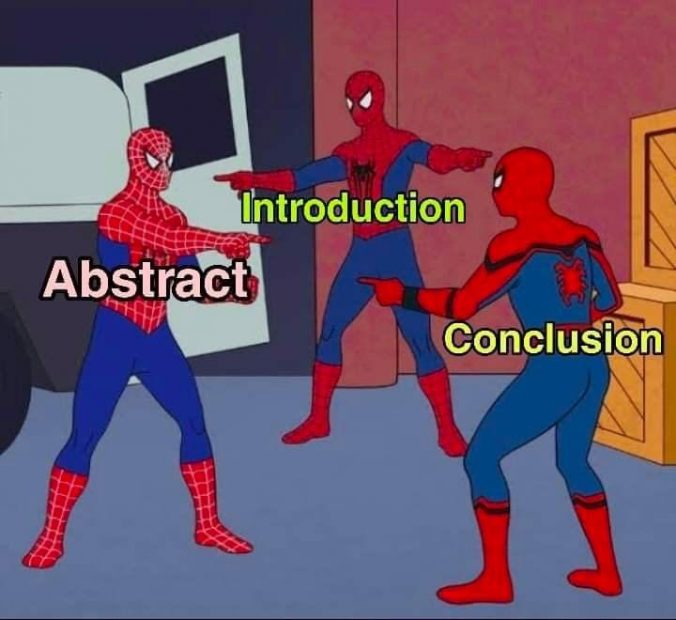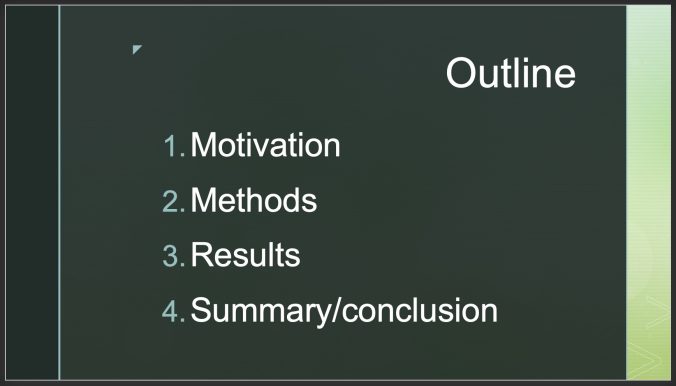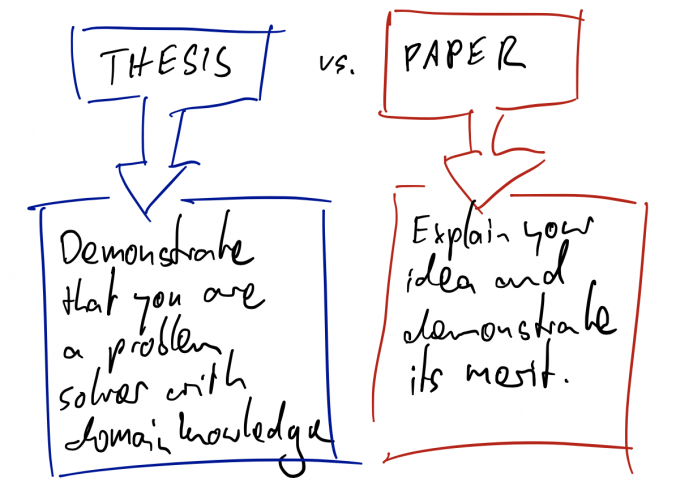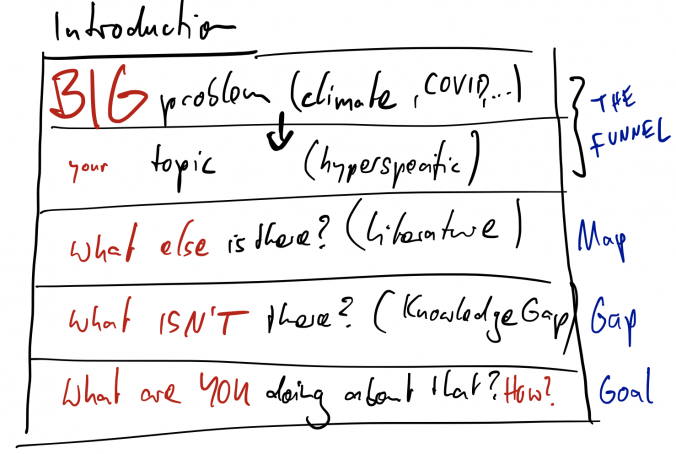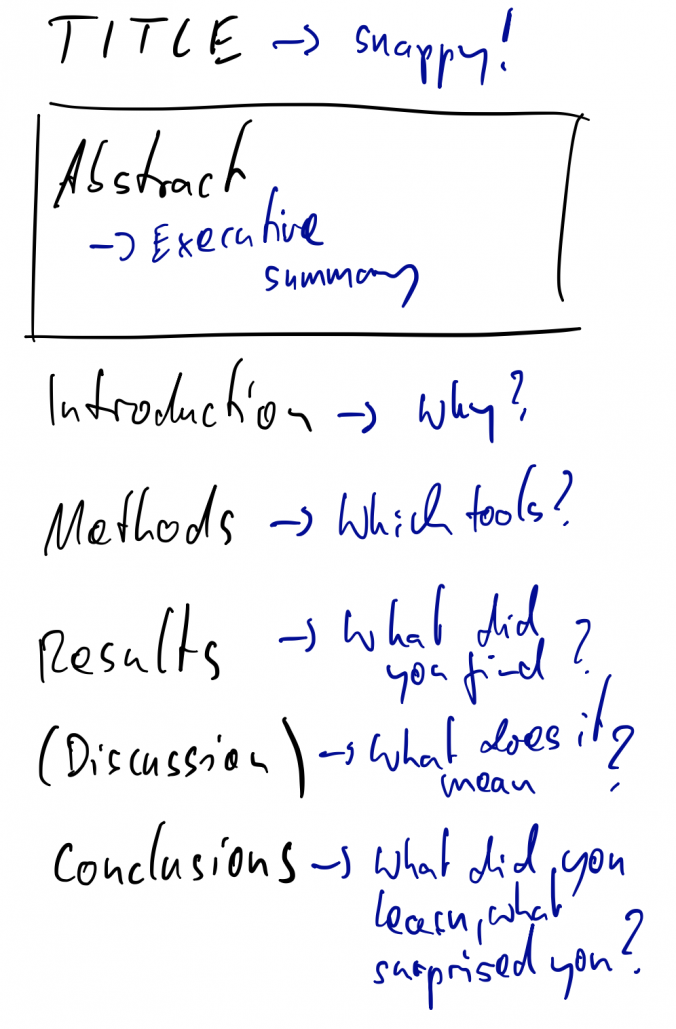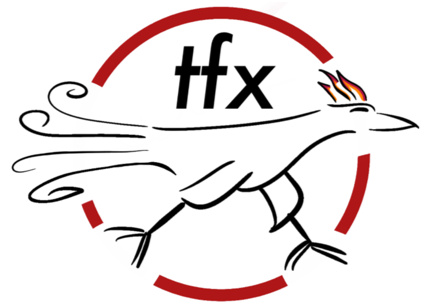Darrion Nguyễn (@lab_shenanigans) shares the above meme and writes
Abstract: I will do this thing
Introduction: I’m finna do this thing
Conclusion: So about that… I kinda did the thing. However, it can only be done only under some specific circumstances, which are beyond the scope of this paper and would require additional studies 🙃
Hey, Darrion, guess I'm gonna have to go ahead and disagree with you there! One big caveat: Clearly, as so many things, this is ultimately a matter of taste or group tradition.
But (!), the way I see these things, the ambiguity (amtriguity?) vanishes, and each of the three parts Abstract, Introduction, and Conclusion can be used to fulfill a distinct and useful purpose.
Let's start at the beginnning, with the Abstract. Remember that the abstract is available to everyone visiting a journal's website, regardless of whether they have a subscription to read the full paper or not. Some authors prefer to treat the abstract like a movie trailer, just teasing the article, not giving away too much and certainly not the resolution. I think that's a wasted opportunity: I want the curious reader to get a complete summary of the paper without having to first figure out how to get your library to subscribe, or to actually buy the article. Most importantly, I want the curious reader to know what the insights are, the take-aways.
The purpose of the Abstract is to provide a complete summary of the article, including research question, methods, approach, results, and conclusions.
Next is the Introduction, and there's a whole post about that: https://science.banuti.de/how-to-write-an-introduction/ Without simply repeating what I wrote there:
The purpose of the Introduction is to present an interesting research question and demonstrate you are able to solve it.
Finally, we have the Conclusions.
The purpose of the Conclusions are to identify your lessons learned, things that surprised you. Find 3-5 points that you want the reader to take away from the paper, order them from most important to least important.
No need to summarize the paper (if you really, really want, maybe include a very short sentence stating the research goal identified at the end of the introduction, but don't repeat what you did).
Also no need to spell out all the things that you didn't do because they are beyond the scope. That goes without saying: things you didn't do are not in your paper.
So, sure, go ahead and treat Abstract, Introduction, and Conclusion all the same at your own peril; you are unnecessarily sacrificing a big opportunity to make your paper much clearer and poignant.
Happy writing!
db

